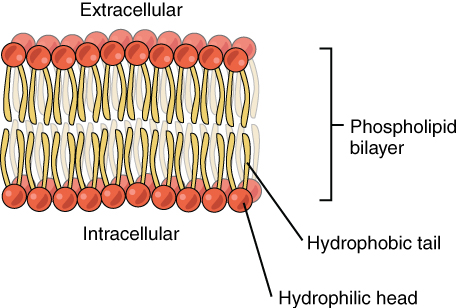How can fatty acids become phospholipids?
1 Answer
A phospholipid is similar to a triglyceride, except that a phosphate group replaces one of the fatty acids, so that two fatty acids and one phosphate group bond with a glycerol molecule. The phosphate head is polar and hydrophilic, while the fatty acid tail is nonpolar and hydrophobic. All cell membranes consist of a phospholipid bilayer, in which the phosphate heads are oriented either to the aqueous extracellular fluid, or the aqueous intracellular fluid. The fatty acids are sandwiched in between.

 )
)
The R attached the the phosphate group represents any of a number of organic molecules that can attach to the phosphate group. One example is choline.
 )
)

